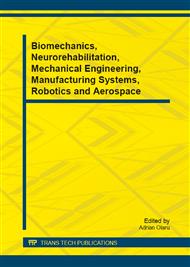[1]
Hirschel, E.-H. Classes of Hypersonic Vehicles and their Aerothermodynamic Peculiarities. Basics of aerothermodynamics (Progress in astronautics and aeronautics), pp.3-11. (Springer, Berlin ; New York, 2005).
Google Scholar
[2]
Hirschel, E.H. and Weiland, C. Aerothermodynamic Design Problems of Winged Airbreathing Vehicles. Selected Aerothermodynamic Design Problems of Hypersonic Flight Vehicles, pp.129-205 (Springer & AIAA, 2009).
DOI: 10.1007/978-3-540-89974-7_4
Google Scholar
[3]
Heiser, W.H. Single-Stage-to-Orbit Versus Two-Stage-to-Orbit Airbreathing Systems. Journal of Spacecraft and Rockets (doi:10.2514/1.46631), 2010, 47(1), 222-223.
DOI: 10.2514/1.46631
Google Scholar
[4]
Ortwerth, P.J. Scramjet Flowpath Integration. Scramjet Propulsion, pp.1105-1293 (AIAA, Washington D. C., 2000).
DOI: 10.2514/5.9781600866609.1105.1293
Google Scholar
[5]
Heiser, W.H. and Pratt, D.T. Hypersonic Airbreathing Engine Performance Analysis. Hypersonic airbreathing propulsion, AIAA education series., pp.150-193 (American Institute of Aeronautics and Astronautics, Washington, D.C., 1994).
DOI: 10.2514/4.470356
Google Scholar
[6]
Sarosh, A., Feng, D.Y. and Adnan, M. A Configurational Aerothermodynamics Methodology for Derivation of Baseline Configuration on Elliptical Cone-Wedge Integrated Waverider. 2011 International Conference on Aerospace Engineering and Information Technology (Aeit 2011), 2011, 102-107.
Google Scholar
[7]
Sarosh, A., Yun-Feng, D. and Kamarinchev, D. STS Forebody Material Selection Method Using Integrated Aerothermodynamic Optimization Approach. Advanced Materials Research Journal, TransTech Publications Inc., 2012, 488-489 (2012), 1103-1108.
DOI: 10.4028/www.scientific.net/amr.488-489.1103
Google Scholar
[8]
Raible, T. and Jacob, D. Evaluation and Multidisciplinary Optimization of Two-Stage-to-Orbit Spaceplanes with Different Lower Stage Concepts. Basic Research and Technologies for Two-Stage-to-Orbit Vehicles, pp.38-542005).
DOI: 10.1002/3527605711.ch3
Google Scholar
[9]
Fay, J.A. and Riddell, F.R. Theory of Stagnation Point Heat Transfer in Dissociated Air. Journal of Aeronautical Sciences, 1958, 25(2), 73-85.
DOI: 10.2514/8.7517
Google Scholar
[10]
Hu, D., Sarosh, A. and Dong, Y.F. An improved particle swarm optimizer for parametric optimization of flexible satellite controller. Applied Mathematics and Computation, 2011, 217(21), 8512-8521.
DOI: 10.1016/j.amc.2011.03.055
Google Scholar


